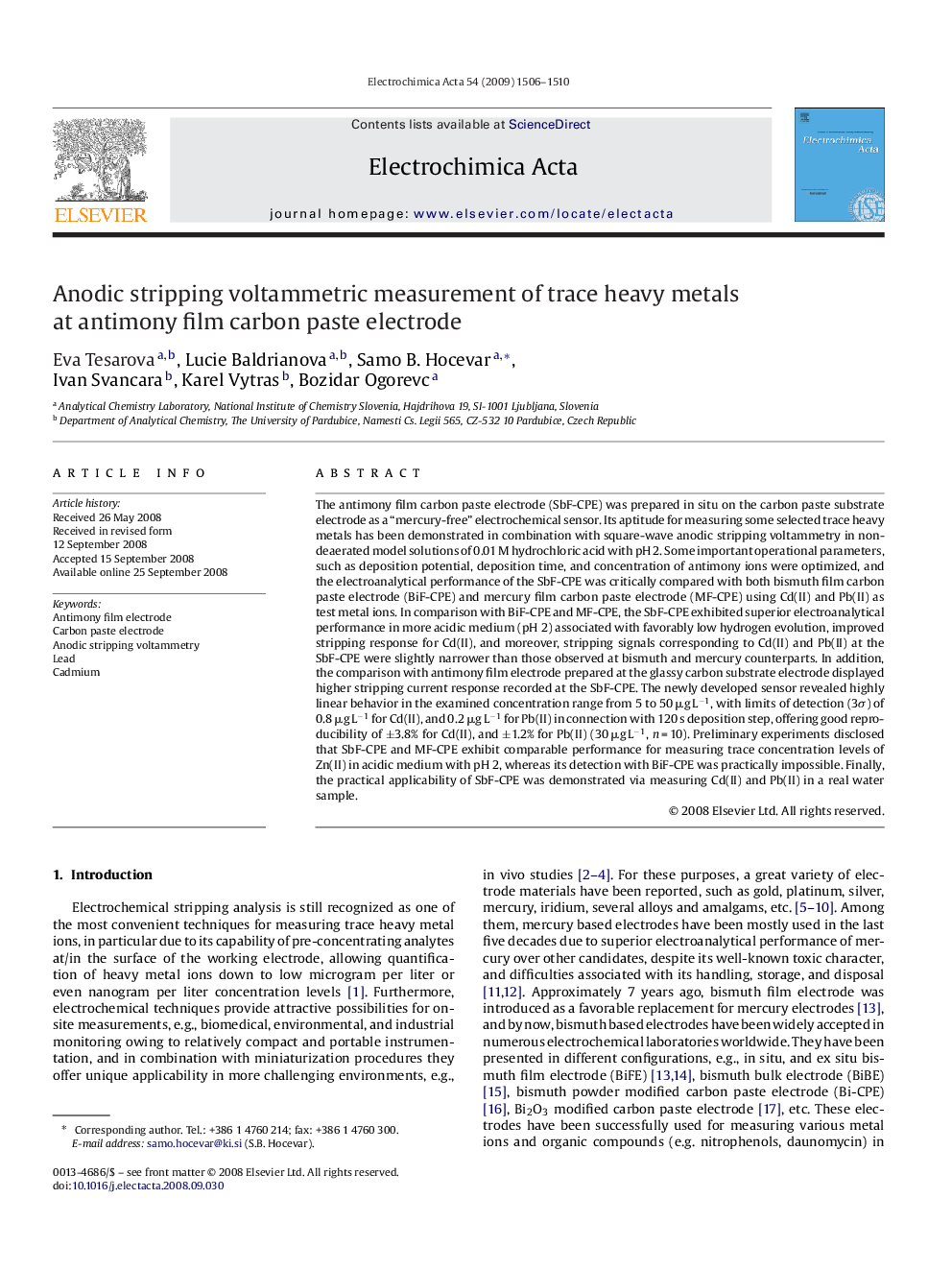| Article ID | Journal | Published Year | Pages | File Type |
|---|---|---|---|---|
| 191723 | Electrochimica Acta | 2009 | 5 Pages |
The antimony film carbon paste electrode (SbF-CPE) was prepared in situ on the carbon paste substrate electrode as a “mercury-free” electrochemical sensor. Its aptitude for measuring some selected trace heavy metals has been demonstrated in combination with square-wave anodic stripping voltammetry in non-deaerated model solutions of 0.01 M hydrochloric acid with pH 2. Some important operational parameters, such as deposition potential, deposition time, and concentration of antimony ions were optimized, and the electroanalytical performance of the SbF-CPE was critically compared with both bismuth film carbon paste electrode (BiF-CPE) and mercury film carbon paste electrode (MF-CPE) using Cd(II) and Pb(II) as test metal ions. In comparison with BiF-CPE and MF-CPE, the SbF-CPE exhibited superior electroanalytical performance in more acidic medium (pH 2) associated with favorably low hydrogen evolution, improved stripping response for Cd(II), and moreover, stripping signals corresponding to Cd(II) and Pb(II) at the SbF-CPE were slightly narrower than those observed at bismuth and mercury counterparts. In addition, the comparison with antimony film electrode prepared at the glassy carbon substrate electrode displayed higher stripping current response recorded at the SbF-CPE. The newly developed sensor revealed highly linear behavior in the examined concentration range from 5 to 50 μg L−1, with limits of detection (3σ) of 0.8 μg L−1 for Cd(II), and 0.2 μg L−1 for Pb(II) in connection with 120 s deposition step, offering good reproducibility of ±3.8% for Cd(II), and ±1.2% for Pb(II) (30 μg L−1, n = 10). Preliminary experiments disclosed that SbF-CPE and MF-CPE exhibit comparable performance for measuring trace concentration levels of Zn(II) in acidic medium with pH 2, whereas its detection with BiF-CPE was practically impossible. Finally, the practical applicability of SbF-CPE was demonstrated via measuring Cd(II) and Pb(II) in a real water sample.
